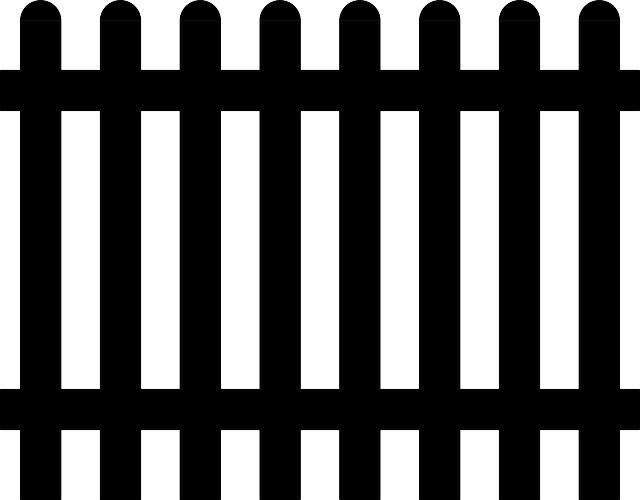In Ontario, clear rural property lines are crucial for farmers and landowners, impacting legal clarity, resource management, and safety. Fences, from traditional wooden/metal options to modern eco-friendly materials like recycled plastic, serve as visual boundaries. Choosing the right farm fence involves considering durability, aesthetics, budget, and legal implications, ensuring effective property maintenance and compliance with provincial laws while enhancing environmental sustainability.
Ontario’s rural landscapes present unique challenges when defining property lines. This article explores the diverse fencing options available for Ontario farms, from classic materials like wood and steel to modern innovations designed with sustainability in mind. Discover traditional farm fence styles, learn about legal considerations, and gain expert tips for installing a suitable and long-lasting barrier that protects your rural property. Find the perfect solution for your farm fence needs in this comprehensive guide.
- Understanding Rural Property Line Definition in Ontario
- Traditional Farm Fence Options for Ontario Properties
- Modern and Eco-Friendly Fencing Solutions for Farms
- Legal Considerations and Installation Tips for Rural Fences
Understanding Rural Property Line Definition in Ontario
In Ontario, the definition of rural property lines is a crucial aspect for landowners, especially those with agricultural interests. Unlike urban areas, rural properties often encompass vast stretches of land, and clearly defining these boundaries is essential for various reasons, including legal clarity, resource management, and safety. Property lines in rural settings are typically established through a combination of survey records, natural landmarks, and man-made markers like fences.
Farmers and landowners have several options when it comes to fencing their properties. A farm fence serves not only as a physical barrier but also as a visual marker of ownership. Common types include wood or vinyl posts with wire or mesh panels, chain link, or rail fences. Each material has its advantages and is chosen based on factors like durability, maintenance requirements, aesthetic preferences, and budget. Understanding the legal implications of property lines and selecting an appropriate farm fence can help landowners maintain their properties effectively in Ontario’s rural landscapes.
Traditional Farm Fence Options for Ontario Properties
In Ontario, traditional farm fences have long been a cornerstone of property definition and livestock management. The most common options include wooden posts and rails, chain link, and barbed wire. Wooden post and rail fences, for instance, offer a classic aesthetic and robust protection against wildlife and stray animals. They’re a popular choice for agricultural purposes due to their durability and ease of installation.
Chain link fences, another traditional option, provide visibility and security without obstructing the view. They’re often used in areas where livestock needs to be monitored while still allowing for clear lines of sight. Barbed wire, known for its effectiveness in keeping animals in check, is a budget-friendly choice that requires minimal maintenance but can pose safety concerns if not properly installed and managed. Each of these farm fence options serves a unique purpose, catering to diverse property needs and preferences in rural Ontario.
Modern and Eco-Friendly Fencing Solutions for Farms
In today’s world, farmers are looking for modern and eco-friendly fencing solutions that can effectively define property lines while minimizing environmental impact. One such option is the use of recycled plastic or composite farm fences. These materials are durable, low-maintenance, and can be molded into various styles to suit different landscapes. They also offer long-term cost savings compared to traditional wood or metal fences.
Another innovative approach is integrating renewable energy into fencing systems. Solar-powered fence posts, for instance, provide a sustainable alternative to conventional power sources. These posts not only charge during the day and store energy for night use but also contribute to a farm’s overall green credentials. Moreover, they can be equipped with smart sensors that monitor animal movement or detect intruders, enhancing security and efficiency on the farm.
Legal Considerations and Installation Tips for Rural Fences
When installing a rural fence in Ontario, understanding legal considerations is paramount. Property lines and boundary fences are regulated by provincial laws, such as the Land Titles Act, which requires accurate mapping and documentation to avoid disputes. It’s crucial to verify with local authorities or a land surveyor before beginning construction to ensure your chosen fence design complies with zoning regulations and sets clear property boundaries.
Installation tips for farm fences include selecting materials suited to Ontario’s climate and terrain, such as durable vinyl or treated wood. Properly anchoring posts in solid soil is essential for long-term stability. Regular maintenance, including inspection for damage and re-tightening of hardware, will prolong the life of your fence. Additionally, consider aesthetic appeal by choosing designs that complement the rural landscape while effectively defining your property lines.
In Ontario, defining property lines is essential for rural landowners, and there are diverse fencing options available. From traditional farm fences to modern eco-friendly solutions, each has its unique benefits and legal considerations. By understanding these alternatives, landowners can choose the best fit for their properties, enhancing both functionality and aesthetics while adhering to local regulations. Investing in a well-designed farm fence not only establishes clear boundaries but also contributes to the overall beauty and value of rural landscapes.




